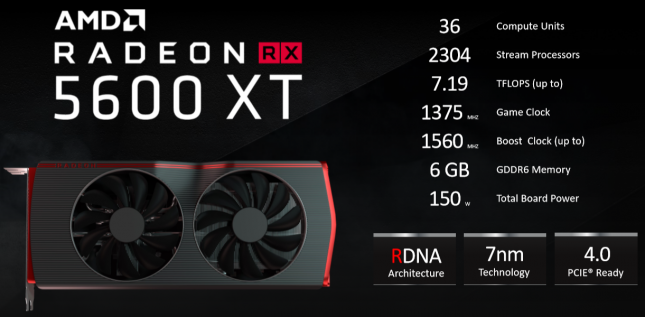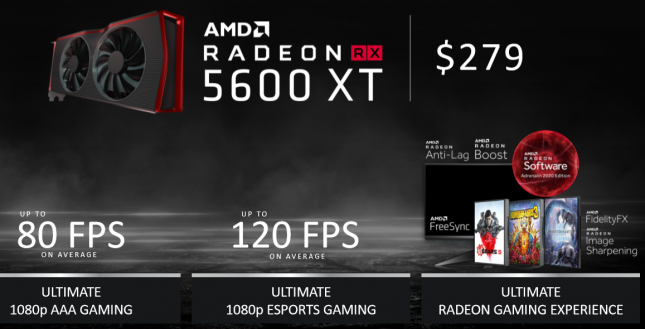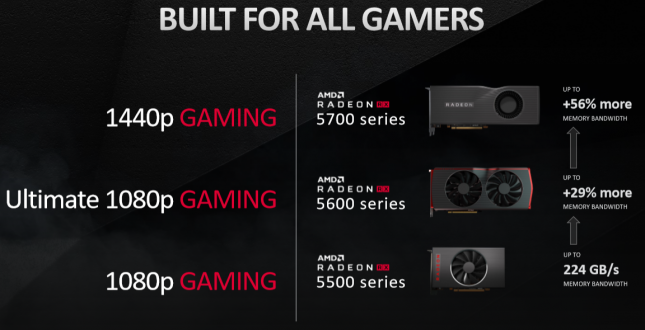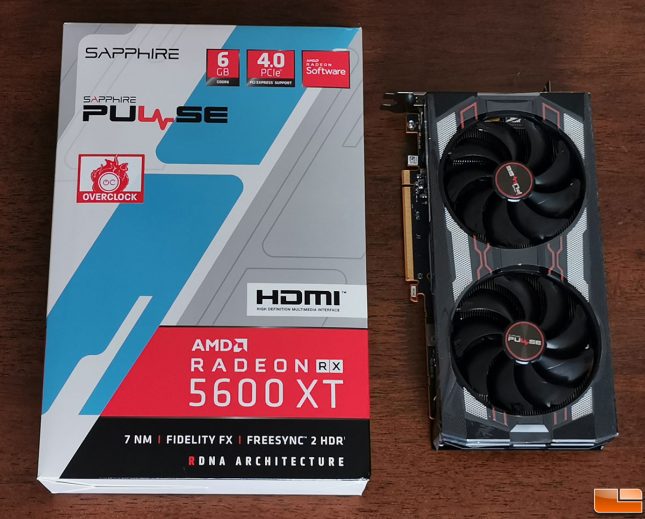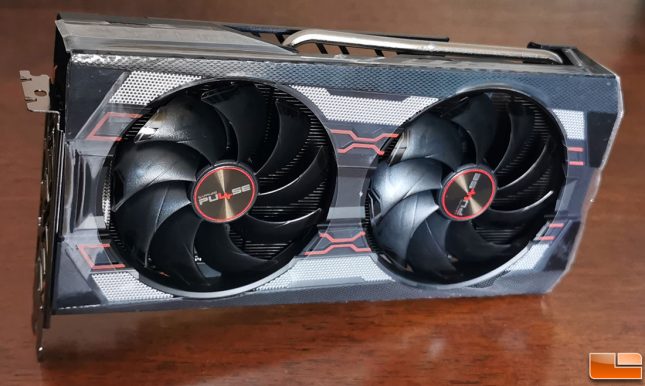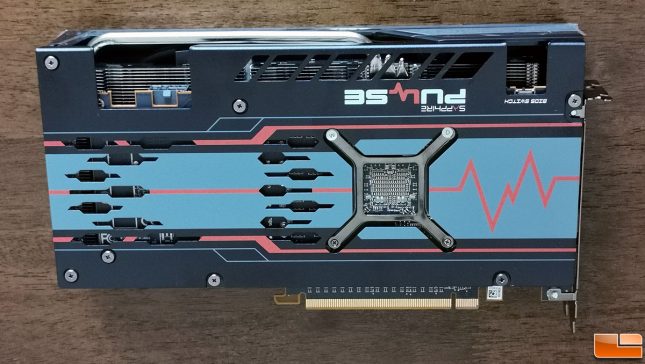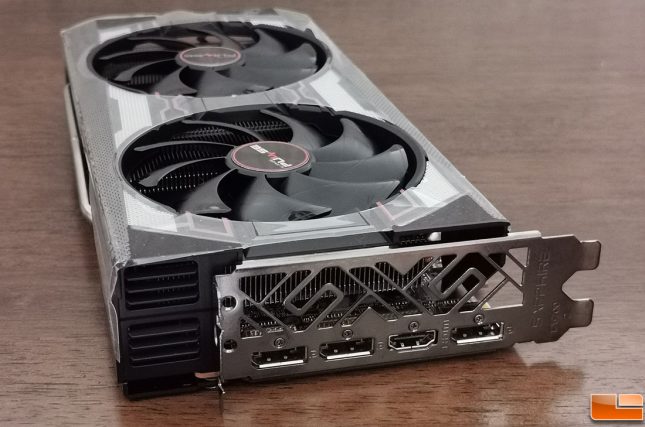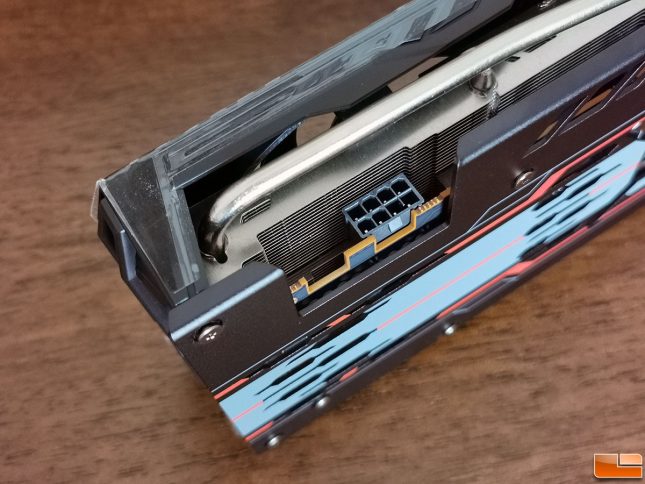Sapphire Pulse Radeon RX 5600 XT 6GB OC Review
Sapphire Radeon Pulse RX 5600 XT OC Edition Review
AMD announced the Radeon RX 5600 XT during its press conference at CES 2020 as the ultimate discrete desktop graphics card for 1080P gaming. AMD wanted to bring a really great card to market for 1080P gamers and they think the Radeon RX 5600 XT at the $279 price point will do very well. The 5600 XT also completes the 5500, 5600 and 5700 series of graphics cards. Today is all about the 5600 XT, but AMD CEO Dr. Lisa Su did recently confirm that AMD’s big Navi GPU will be coming out later in 2020. That will likely end up in the Radeon RX 5800 series and arrive at a much higher price point than the card being released today.
The AMD Radeon RX 5600 XT is only available with 6GB of GDDR6 memory and carries a Suggested Retail Price (SRP) of $279. The AMD reference card is pictured in the slide above, but it will not be sold and was only used internally and to help AMD’s board partners design their cards. AIB pricing will vary between brands and models, but the base models should be around $279.
When it comes to what is going on under the hood, the 5600 XT features the NAVI 10 GPU with 2,304 stream processors enabled in 36 CUs or compute units. It also packs 144 TMUs and 64 ROPs with clock speeds rated at 1375 MHz game and 1560 MHz boost clocks. The card manages to deliver up to 7.19 TFLOPs of compute performance at 150 Watts of Total board power. The GDDR6 memory runs at 12 Gbps across a 192-bit bus interface, delivering a cumulative memory bandwidth of 288 GB/s.
AMD claims that the Radeon 5600 XT is capable of delivering up to 80 FPS on average at 1080P on most AAA gaming titles and up to 120 FPS on average for 1080P eSports titles. The Radeon RX 5600 XT also comes with 3 Months of Xbox Game Pass for PC and your choice of either Borderlands 3 or Monster Hunter World: Iceborne.
AMD Makes Last Minute Changes
AMD sent over the Sapphire RX 5600 XT Pulse OC for us to review and late last week we were given a new vBIOS that completely changed the performance of the card. The card was originally shipped to us with a boost clock of 1,620 MHz and memory running at 12Gbps. So, Sapphire was overclocking this card a bit over the AMD reference design.
We aren’t exactly sure what all went down, but NVIDIA slashed the price of the GeForce RTX 2060 Founders Edition card by $50 earlier this month. That dropped the price of the RTX 2060 base models down to the $279-$299 range, which is right where the AMD Radeon RX 5600 XT was supposed to be. Rather than reducing the price of the Radeon RX 5600 XT it seems that AMD wanted to push the frequencies of this series even further and we received new vBIOS versions for all of the cards that we have received.
It wasn’t just a small change either as it increased the GPU boost speed to 1,750 MHz and, most importantly, the increased the memory clock from 12Gbps to 14Gbps. The higher GPU and memory speeds helped boost performance by around 10 percent. This bump allows it now to better compete with the NVIDIA GeForce RTX 2060 series, but it also comes dangerously close to the performance level of the AMD Radeon RX 5700 series. It also bumped up the cards Total Graphics Power (TGP) from 150 Watts to 160 Watts, so hopefully all the AIBs coolers are ready for the last minute power increase.
The Radeon RX 5600 XT is not replacing the Radeon RX 5700 graphics card though and it is not receiving any changes. AMD believes that the two products address different market needs. The Radeon RX 5600 XT was specifically designed and optimized to deliver the best 1080p gaming experiences, while the Radeon RX 5700 with its additional memory and memory bandwidth was specifically designed for 1440p gaming.
To further complicate things we were told that AMD only sampled OC editions of the 5600 XT to media for launch reviews and that the vBIOS only applies to factory overclocked cards. The reference clocks of the card still remain the same. Legit Reviews asked AMD how many of the board partner cards will be based on the original reference clocks and we were told to check with the AIBs. So, this feels like a rather rushed last minute maneuver by AMD to counter NVIDIA’s price drop on the GeForce RTX 2060 cards. Consumers will need to be aware of the 5600 XT clock speeds on the model that they buy as there is a big difference with the reference cards specs (1560MHz Boost, 12Gbps GDDR6) and that on the overclocked cards (1750MHz Boost, 14Gbps GDDR6).
So, what card did AMD send over for testing? We were sent the Sapphire Pulse Radeon RX 5600 XT 6GB OC Edition model for testing. This is not the entry-level 5600 XT model since it is an overclocked card, but it only runs $10 over the SRP and is available for $289.99. The clocks on this card are 1,615 MHz Gaming and 1750 MHz Boost with 14 Gbps GDDR6 memory when run with the out of the box settings.
On the front of the card you’ll notice the pretty standard Sapphire Dual-X GPU cooling solution that has Sapphire’s Zero dB cooling feature. This means the fans don’t spin until the graphics card is under heavy load, so at idle the card is silent.
The Pulse 5600 XT comes with a backplate that looks good. This metal plate helps protect the components on the card, adds some bling to your build as well as a little structural integrity to the cards PCB.
When it comes to display outputs, the Sapphire Radeon Pulse RX 55600 XT has a single HDMI port and three DisplayPort outputs. This is what we would consider the standard video output for the AMD Radeon RX 5XXX series of cards.
Along the top edge of the card you’ll find a single 8-pin PCIe power connector on the end of the card and over by the I/O bracket there is a BIOS selector switch. The card ships with a vBIOS for performance and silence.
Performance Mode – 1615 MHz Game, 1750 MHz Boost, 14 Gbps GDDR6, 160W TGP
Silent Mode – 1460 MHz Game, 1620 MHz Boost, 12 Gbps GDDR6, 135W TGP
Let’s take a quick look at the GPU test system and then dive straight into the benchmarks!

